Author(s): Vedant Sunil Deshpande
As digital advertising continues to grow, accurately measuring the impact of marketing efforts across multiple channels has become a complex but essential task. Traditional attribution models like last-touch fail to capture the diverse ways consumers interact with ads before converting. Multi-touch attribution (MTA) models offer a solution by distributing credit across various interactions, reflecting the true influence of each touchpoint. This paper provides a comprehensive review of popular attribution models, including linear, time-decay, U-shaped, and custom models, assessing their strengths and limitations. Additionally, it highlights the importance of integrating both click-through and view-through metrics to understand customer engagement more fully. By exploring these models, this paper aims to guide marketers in selecting the most effective attribution strategies to optimize ad spend, improve campaign performance, and gain a holistic view of customer journeys.
Digital advertising has become a cornerstone of modern marketing, allowing brands to reach consumers across multiple online channels. In the U.S. alone, the advertising market is projected to cross $357.5 billion by 2028, with 77% of the total spend coming from digital advertising [1]. As companies expand their reach through multi-channel marketing—spanning social media, search engines, emails, and display ads—consumers now interact with ads at various touchpoints before making a purchase decision. This shift has made it increasingly difficult to measure the effectiveness of each ad interaction, leading to the growing importance of attribution in digital advertising.
Attribution is the process of assigning credit to the various marketing interactions that lead to a conversion. In a multi- channel environment, effective attribution is critical for accurately understanding marketing performance and making informed decisions on resource allocation. While traditional models, such as last-touch attribution, offer simplicity, they often fall short of capturing the complete customer journey, making advanced multi-touch attribution (MTA) models a necessity.
This review aims to provide a comprehensive examination of attribution models, evaluate their strengths and limitations, and assess their impact on measuring customer journeys. By exploring these models, this paper seeks to offer insights into how brands can optimize their advertising strategies to drive meaningful results in a complex digital landscape.
Over the past decade, the digital landscape has evolved dramatically, providing brands with numerous channels to reach potential customers. Brands often run campaigns across various media types, including display ads, social media ads, search engine ads, and email marketing. These overlapping campaigns expose customers to multiple ads across platforms. When a customer makes a purchase after seeing several ads, challenges arise in assigning credit to each campaign. Traditionally, the last campaign a customer interacted with was given full credit, known as Last- Touch Attribution.

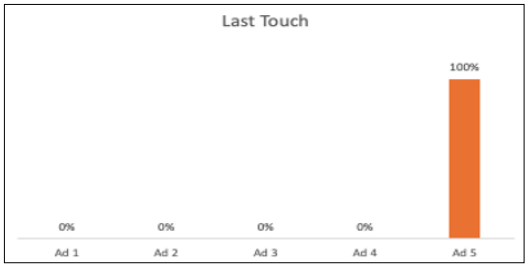
Figure 1: Last Touch Attribution
Last-touch attribution gained popularity for its simplicity, par- ticularly in the early days of digital advertising when data track- ing was limited. However, it ignores the other interactions that influenced the customer’s decision before the final purchase.
Brands now have access to multi-touch attribution (MTA) mod- els that assign credit to all the ads a customer encounters on their journey. Several common MTA methodologies are used to dis- tribute credit more equitably:
In the linear attribution model, every ad a customer interacts with receives equal credit for the conversion. For instance, if a shopper sees an Instagram ad, an email ad, and a display ad in an app before purchasing, each ad gets 1/3rd of the credit. While this model moves beyond last-touch attribution, it oversimpli- fies the process, treating all touchpoints as equally influential, which may not reflect actual customer behavior. Some ads, like those promoting discounts, may have a greater impact on the final purchase.

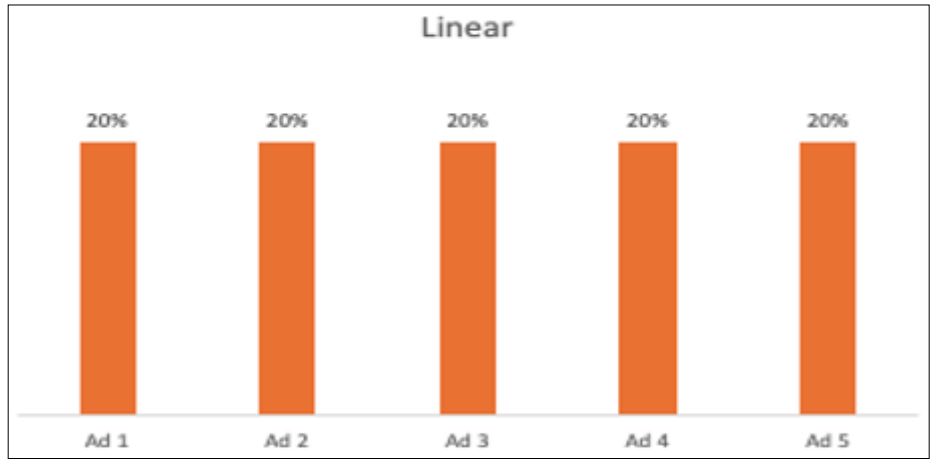
Figure 2: Multi Touch Attribution – Linear Model
The time decay model assigns more credit to ads viewed closer to the conversion. As time progresses and the customer interacts with more ads, the influence of earlier touchpoints diminishes. This approach benefits campaigns focused on driving immediate conversions, giving more weight to ads that directly lead to purchases. However, it undervalues the role of the initial ads in creating awareness, which may have been crucial to the final outcome.

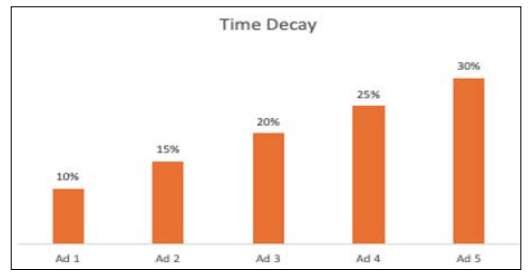
Figure 3: Multi Touch Attribution- Time Decay Model
The U-shaped model gives the highest credit to the first and last ads the customer encounters, with less credit going to the touchpoints in between. This method balances the importance of both brand awareness (from the first touchpoint) and conversion (from the last touchpoint). While more sophisticated than linear or time decay models, it tends to oversimplify the middle part of the customer journey, ignoring the varying degrees of influence from intermediate touchpoints.

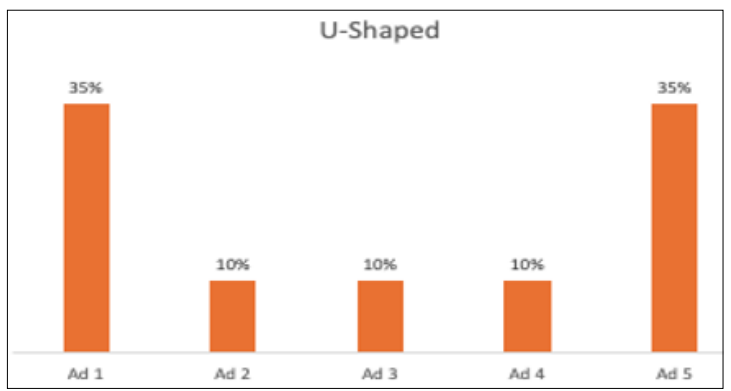
Figure 4: Multi Touch Attribution – U-Shaped Model
Some brands develop custom multi-touch attribution models, which assign credit based on predefined factors tailored to the brand’s specific goals. These models can offer granular insights by avoiding generalizations and are often powered by machine learning to analyze customer journeys and determine which channels and ads most effectively drive conversions. However, custom models can be complex to design, implement, and interpret, requiring historical data and advanced analytics tools. The incremental value from such models may not always justify the additional effort.
There have been numerous examples of how modern multi-touch attribution models have helped brands grow the effectiveness of campaigns and drive revenue.
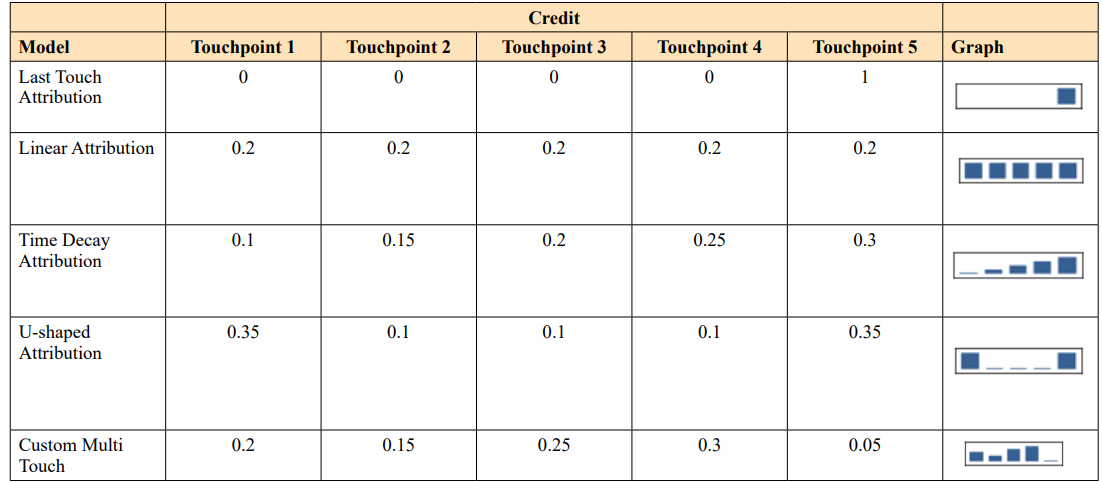
While attribution models help assign credit across multiple touchpoints, measuring customer engagement is crucial to understanding how ads influence behavior. Historically, clicks and click-through rates (CTR) have been the dominant metrics for evaluating ad effectiveness, particularly in campaigns targeting immediate actions, like purchases or sign-ups. However, with the rise of passive media consumption on platforms like Instagram, TikTok, and YouTube, the landscape of customer interaction has shifted.
A Click-Through Rate (CTR) measures how often users click on an ad relative to the number of times it was shown. It’s a straightforward metric, calculated as:
In addition to CTR, Click-Through Conversion Rate goes one step further by tracking how many of those clicks resulted in conversions, providing a more direct link between user interaction and sales. This is often a critical measure for performance-driven campaigns: Click-Through Conversion Rate = (Number of Conversions from Clicks ÷ Number of Ad Clicks) × 100
However, as the way consumers engage with media has evolved, clicks alone no longer capture the full impact of an ad. Many users may see an ad, not click on it immediately, but still be influenced by it and later make a purchase through a different channel or after multiple exposures. This is where view-through rate (VTR) becomes an essential metric. VTR measures the influence of an ad that was simply viewed but not clicked, recognizing that impressions can also play a pivotal role in the decision-making process:
View-through conversions are particularly valuable for upper-funnel campaigns, where the goal is to build awareness and nurture potential customers who may not convert right away. These impressions often act as subtle nudges, contributing to brand recall and consideration, even if the customer doesn’t take immediate action.
In today’s multi-channel, multi-device world, it’s critical to track both clicks and views to get a holistic view of ad performance. View-through conversions provide insight into the indirect impact of ads, while click-through conversions capture more direct, action-oriented interactions. Both metrics work together to give brands a complete picture of how their ads are driving customer engagement and ultimately contributing to conversions.
In an era where customer journeys are increasingly complex, relying solely on traditional attribution models like last-touch is no longer sufficient. Brands must adopt more sophisticated multi- touch attribution models to gain a comprehensive understanding of how different interactions across channels and devices drive conversions. By leveraging both click-through and view-through conversion rates, businesses can create a fuller picture of customer behavior, ensuring their campaigns are optimized for both awareness and action. The future of marketing measurement lies in this holistic view—balancing the immediate intent captured by clicks with the broader influence of impressions to drive smarter ad spend and campaign effectiveness.
